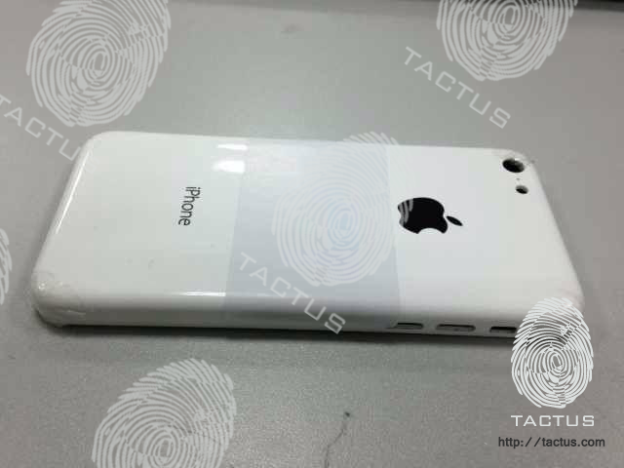
There has been a ton of buzz floating around about the affordable so-called iPhone mini that Apple may or may not be working on. We recently wrote up all the leaks that have made their way onto the Internets to date, but now we have one more to add to that: and it’s a visual.
As reported by Tactus earlier today, an alleged mold of the iPhone mini has finally surfaced, only revealing the backside. If it’s real, it shows that, as we’ve all been thinking, the model will in fact be entirely plastic polycarbonate. But despite ditching the metal casing for the more affordable plastic, in standard Apple fashion, it’s still sleek looking.
Even though it’s being referred to as the iPhone Mini by many, the model shows that it looks as though it will actually be bigger than both the iPhone 4/4s, so maybe it won’t actually be referred to the Mini. Perhaps it’s just the affordability that will be the biggest draw.
The report also says that the plastic iPhone will run on an A5 processor just like the iPad Mini, have a 3.5-inch Retina display. And finally, if it’s rocking a 5MP rear-facing camera, as the rumor says, then this could definitely be the perfect alternative for anyone who has been wanting an iPhone but hasn’t yet been willing to shell out the cash in order to get one. (Not to mention, as we’ve mentioned before, it’s likely that the plastic casing will allow for a selection of colors for those who want a little personality; another big draw in a market flooded with black, white, and silver devices.)
Tactus even goes as far to predict that the devices will hit the market on October 15 and sell for just $300, which is a big difference from the $100-150 price we earlier predicted. Will any of these predictions prove to be true? We’ll just have to wait and see.
Editors' Recommendations
- How to fix iMessage activation errors on your iPhone
- I found an amazing new way to use my iPhone 15 Pro Max
- Apple’s new iPad Air could be in trouble
- Are you having iPhone alarm problems? A fix is coming soon
- Best iPhone 14 deals: Unlocked and refurbished


